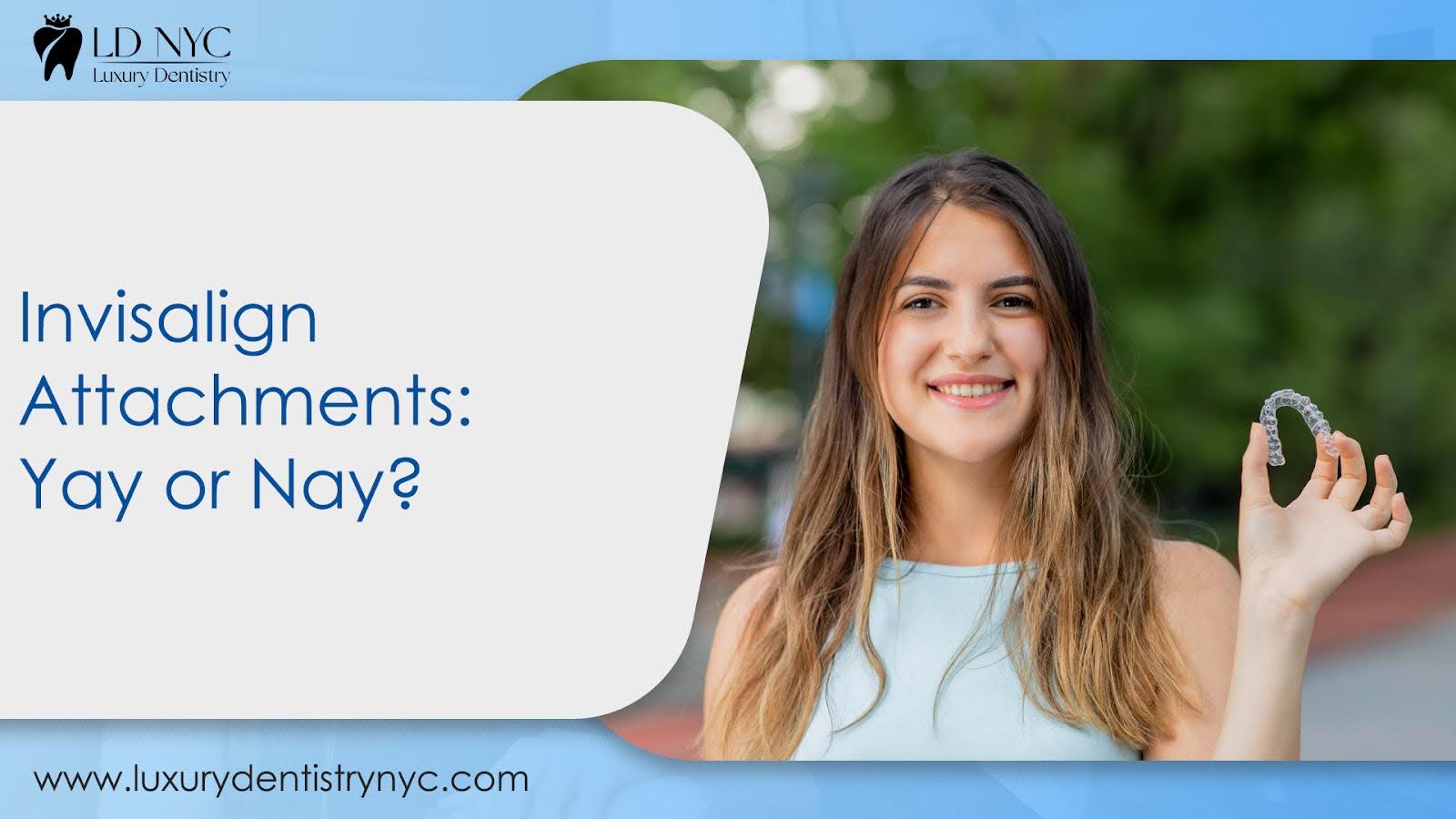Invisalign attachments, also known as dental attachments or clear aligner attachments, play a significant role in the orthodontic treatment process. These small, tooth-colored shapes are strategically placed to aid in the movement of teeth, enhancing the effectiveness of clear aligners. This blog aims to provide a comprehensive understanding of the pros and cons of utilizing Invisalign attachments in orthodontic treatments.
Table of Contents
ToggleUnderstanding Invisalign Attachments
Invisalign attachments are small, tooth-colored shapes made from dental composite material. They are designed to be bonded to specific teeth to provide additional grip and support for clear aligners. The purpose of these attachments is to facilitate the precise application of force, enabling the aligners to shift teeth into the desired position more effectively.
Pros of Invisalign Attachments
- Enhanced Precision: Invisalign aligners contribute to the precision of tooth movement by providing targeted points of contact.
- Efficient Alignment: The attachments facilitate the exertion of the right amount of force, leading to more predictable and efficient tooth alignment.
- Complex Cases: They enable the treatment of more complex orthodontic cases that may not be feasible with clear aligners alone.
Cons of Invisalign Attachments
- Visibility Concerns: One of the main drawbacks is the visibility of attachments, particularly on prominent teeth, which may be aesthetically unappealing.
- Aesthetic Impact: Some patients may find the presence of attachments less aesthetically pleasing compared to the near-invisibility of clear aligners alone.
- Discomfort and Irritation: Attachments may cause mild discomfort or irritation, especially during the initial adjustment period.
How Invisalign Attachments Impact Treatment
The presence of Invisalign attachments can impact the overall treatment process by influencing the fit and feel of the aligners. Patients may experience a slightly different sensation when wearing aligners with attachments, as the attachments create specific points of contact with the teeth. This can affect speech, eating, and overall comfort during the initial adjustment period. Additionally, the aesthetic impact of Invisalign attachments should be considered, as they may affect the appearance of the aligners and, in turn, the overall visual appeal of the orthodontic treatment.
Invisalign Attachments vs. Traditional Braces
When comparing Invisalign to traditional braces, one notable advantage of Invisalign is its aesthetic appeal and comfort, as it is less visible and generally more comfortable than metal braces. However, for certain intricate dental corrections that demand exact manipulation of tooth positioning, traditional braces might be superior in effectiveness. Choosing between Invisalign vs traditional braces should be a decision made on a case-by-case basis, taking into account the specific orthodontic requirements and personal preferences of the individual.
Worth the Initial Discomfort
Invisalign attachments play a crucial role in optimizing the effectiveness of clear aligners for orthodontic treatment. While they offer advantages in terms of precision and versatility, it’s important to consider the potential visibility and minor discomfort associated with attachments. By understanding the pros and cons of Invisalign attachments, patients can make informed decisions and effectively manage their treatment experience for a successful smile transformation.
Discover Your Perfect Smile with Luxury Dentistry NYC
At Luxury Dentistry NYC, led by Dr. D, we’re here to help you achieve your dream smile, whether you prefer Invisalign Aligners or traditional Braces. Book a consultation call with us today to get started on your path to a confident and radiant smile. Your dental health is our priority, and we offer personalized orthodontic solutions to meet your unique needs.

Dr. Steven Davidowitz, also known as “Dr. D” by his patients, is one of the Upper East Side of NYC Manhattan’s leading cosmetic dentists that specialize in designing and maintaining beautiful smiles.












